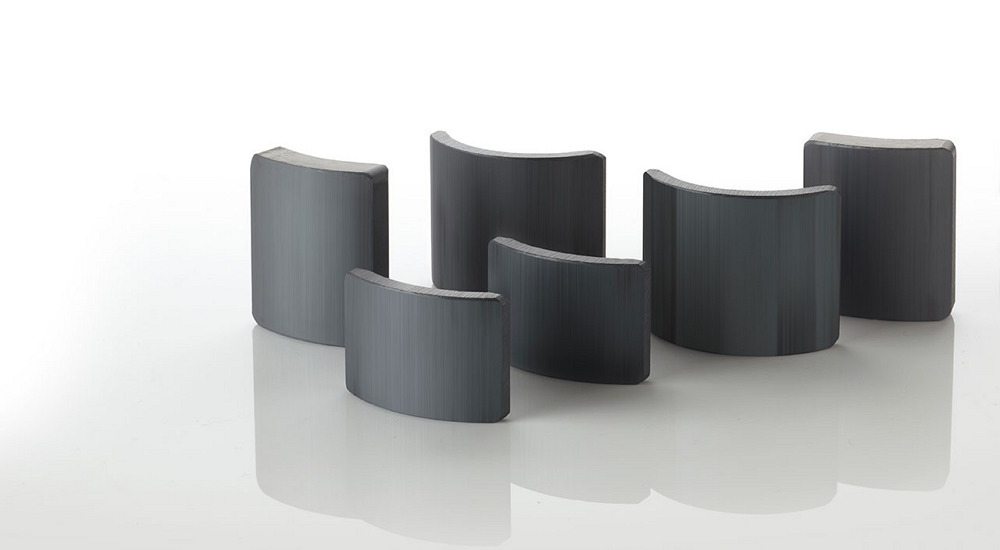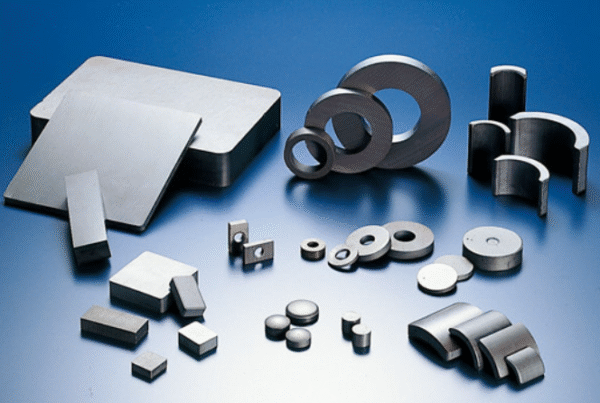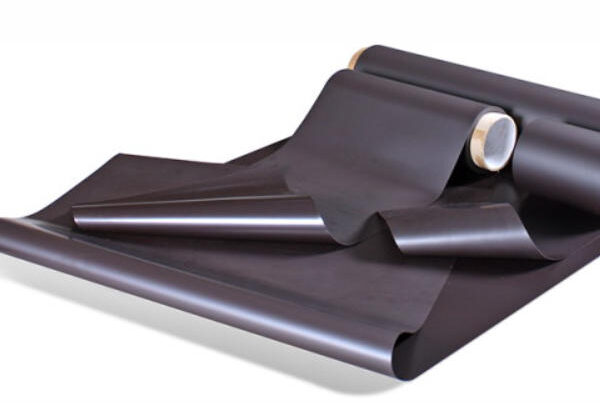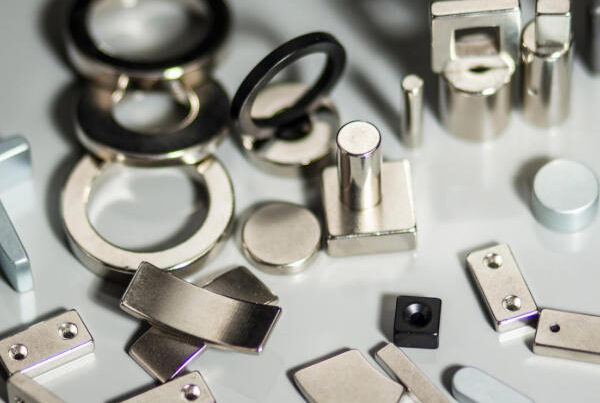Dans le domaine des matériaux magnétiques, les aimants permanents aux terres rares et les aimants en ferrite sont les deux types les plus largement utilisés. Ils présentent non seulement des différences significatives dans leur composition, performances et processus de fabrication, mais jouent également un rôle irremplaçable dans leurs scénarios d'application respectifs. Comprendre la différence entre ces deux types d'aimants vous aidera à prendre des décisions plus raisonnables lors de leur sélection et de leur application..
Aimants permanents aux terres rares: matériaux magnétiques hautes performances
Les aimants permanents aux terres rares font principalement référence au néodyme fer bore (Ndfeb) et samarium-cobalt (SMCO). Ils sont connus sous le nom de “roi des aimants” pour leurs excellentes propriétés magnétiques.
Caractéristiques:
- Produit à énergie magnétique extrêmement élevée ((Bh)maximum)
Le produit énergétique magnétique du néodyme fer bore peut atteindre jusqu'à 50 MGOe ou plus, ce qui concerne 10 fois celui de la ferrite ordinaire, ce qui signifie que le même volume peut produire un champ magnétique plus fort.
- Haute coercitivité
Les aimants permanents aux terres rares ne sont pas facilement démagnétisés par les champs magnétiques externes, et sont particulièrement adaptés aux occasions qui nécessitent une forte force magnétique et une grande stabilité., comme les moteurs, générateurs, équipement de résonance magnétique, etc..
- Différences d’adaptabilité à la température
Les aimants NdFeB ont une mauvaise résistance à la température, et leur magnétisme diminue considérablement lorsque la température dépasse 150°C; Les aimants SmCo ont une meilleure stabilité à haute température, et la température maximale de fonctionnement peut atteindre 350°C.
- Facile à oxyder
En particulier, la surface des aimants NdFeB est sujette à l'oxydation et à la corrosion, une protection par galvanoplastie ou par revêtement est donc généralement nécessaire.
Applications typiques:
- Moteurs hautes performances (moteurs d'entraînement de véhicules à énergie nouvelle)
- Appareils d'imagerie par résonance magnétique
- Instruments de précision
- Dispositifs de séparation magnétique
Aimants en ferrite: un choix économique et durable
Les aimants en ferrite sont frittés à partir d'oxyde de fer et d'oxydes métalliques tels que le strontium et le baryum., et sont le plus grand type de matériau à aimant permanent.
Caractéristiques:
- Faible coût
Les matières premières en ferrite sont abondantes, le processus est simple, et le prix est bas, il convient donc à une production à grande échelle.
- Propriétés magnétiques modérées
Le produit de l'énergie magnétique est généralement de 3 à 5 MGOe, ce qui est bien inférieur aux aimants permanents de terres rares, mais cela suffit pour les applications avec des intensités de champ magnétique faibles à moyennes.
- Excellente résistance à la corrosion
Les ferrites sont chimiquement stables et ne rouillent pas et ne s'oxydent pas facilement., donc aucune couche de protection supplémentaire n'est requise.
- Résistance aux hautes températures
Les ferrites peuvent être utilisés pendant longtemps en dessous de 250°C avec des performances stables.
Applications typiques:
- Haut-parleurs
- Bandes magnétiques pour joint de porte de réfrigérateur
- Rotors de moteur
- Séparateurs magnétiques
- Aimants d'enseignement et de processus
Les principales différences entre les aimants permanents aux terres rares et les aimants en ferrite:
| Dimension de comparaison | Aimants permanents de terres rares | Aimants en ferrite |
| Produit énergétique maximal | Haut (jusqu'à plus 50 MGOe) | Moyen à faible (autour 3-5 MGOe) |
| Coût | Haut | Faible |
| Résistance à la température | Inférieur pour NdFeB,plus élevé pour SmCo | Haut |
| Résistance à la corrosion | Sujet à l'oxydation,nécessite un revêtement | Chimiquement stable, pas facilement corrodé |
| Applications typiques |
Moteurs haut de gamme,médical équipement, aérospatial |
Appareils électroménagers,jouets magnétiques, séparateurs simples |
Conclusion:
Les aimants permanents aux terres rares hautes performances et les aimants en ferrite économiques et pratiques sont des matériaux de base essentiels pour l'industrie moderne.. Ce n'est qu'en comprenant raisonnablement leurs différences et leurs caractéristiques que nous pouvons être à l'aise dans la conception, approvisionnement et demande. Si vous avez d'autres questions sur des domaines d'application spécifiques, veuillez consulter Jlmag plus loin. Nous vous fournirons des services de conseil en produits professionnels.






